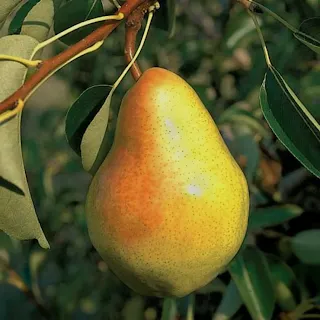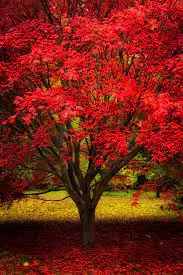Dwarf trees Australia

Dwarf trees, also known as compact or miniature trees, are popular choices for landscaping in Australia due to their small size and aesthetic appeal. They can be used in gardens, courtyards, or even as indoor plants. Here are a few examples of dwarf trees that are commonly found in Australia:
Dwarf Lemon Tree (Citrus lemon)
Dwarf lemon trees are ideal for small gardens or containers. They produce full-sized lemons but have a compact growth habit, making them suitable for limited spaces.
Dwarf Orange Tree (Citrus silences)

Dwarf orange trees, such as the Calamondin or the Washington Navel, are well-suited for Australian gardens. They offer small, manageable fruit trees with a pleasant fragrance.
Dwarf Apple Tree (Malus domestics)

Dwarf apple trees are perfect for smaller gardens or growing in pots. Varieties like the "Cox's Orange Pippin" or "Granny Smith" produce delicious apples while maintaining a compact size.
Dwarf Mango Tree (Mangifera indica)
 |
Irwin Mango |
 |
Palmer Mango |
Some dwarf mango varieties, like the"Irwin" or "Palmer," can be grown in containers or small gardens. They offer a taste of tropical fruit in regions where space is limited.
Dwarf Avocado Tree (Persea americana)
 |
Dwarf Avocado Tree Wurtz |
 |
Dwarf Avocado Tree Holiday |
Compact avocado trees, such as the "Wurtz" or "Holiday" varieties, are popular in Australian gardens. They produce a good yield of creamy avocados without taking up excessive space.
Dwarf Peach Tree (Prunus persica)
 |
Golden Queen |
 |
Trixzie Peach |
Dwarf peach trees are suitable for Australian climates and smaller gardens. Varieties like the "Golden Queen" or "Trixzie Peach" offer tasty fruit and beautiful blossoms.
Dwarf Pomegranate Tree (Punica granatum)

Dwarf pomegranate trees are great for adding color and interest to gardens. They produce vibrant red flowers and small-sized fruits while maintaining a compact form.
Dwarf Fig Tree (Ficus carica):
 |
Little Miss Figgy |
 |
Petite Negra |
Dwarf fig trees, such as the "Petite Negra" or "Little Miss Figgy," can be grown in pots or small gardens. They offer sweet and flavorful figs without the need for extensive space.
When choosing and planting dwarf trees, it's essential to consider the specific climate, soil conditions, and sunlight requirements in your area. Additionally, regular pruning and proper care are necessary to maintain the dwarf size and promote healthy growth. It's advisable to consult with local nurseries or horticulture experts for advice on suitable dwarf tree varieties for your region in Australia
Certainly! Here are a few more examples of dwarf trees that can be found in Australia:
Dwarf Cherry Tree (Prunus avium)

Dwarf cherry trees, such as the "Stella" or "Compact Stella" varieties, are small-sized fruit trees that produce sweet cherries. They are well-suited for smaller gardens or containers.
Dwarf Pear Tree (Pyrus communis)

Dwarf pear trees, like the "Beech Hill" or "Doyenne du Comice," offer compact growth and produce delicious pears. They are suitable for smaller spaces and can be trained on espaliers or trellises.
Dwarf Plum Tree (Prunus domestica):
 |
Satsuma |
Dwarf plum trees, such as the "Mariposa" or "Satsuma," are compact fruit trees that produce juicy plums. They are a good choice for small gardens or containers.
Dwarf Olive Tree (Olea europaea):
 |
Dwarf Olive tree |
 |
Little Ollie |
 |
Arbequina |
Dwarf olive trees, like the "Little Ollie" or "Arbequina," offer small and manageable sizes while producing olives. They are suitable for both ornamental purposes and olive production in milder regions of Australia.
Dwarf Japanese Maple (Acer palmatum):

Dwarf Japanese maples are popular ornamental trees in Australia. Varieties like "Crimson Queen" or "Dissectum" have attractive foliage and compact growth, making them suitable for gardens or even container planting.
Dwarf Bottlebrush (Callistemon spp.):
 |
Captain Cook |
 |
Little John |
Dwarf bottlebrushes, such as the "Little John" or "Captain Cook," are compact shrubs with beautiful brush-like flowers. They are native to Australia and are known for attracting native birds to the garden.
Dwarf Grevillea (Grevillea spp.):
 |
Poorinda Royal Mantle |
 |
Honey Gem
Dwarf grevilleas, like the "Poorinda Royal Mantle" or "Honey Gem," are small-sized shrubs with vibrant flowers. They are popular in Australian gardens due to their drought tolerance and wildlife-attracting qualities.
Dwarf Banksia (Banksia spp.):
 |
Birthday Candles |
 |
Little Eric |
Dwarf banksias, such as the "Birthday Candles" or "Little Eric," are compact shrubs that produce unique and striking flower spikes. They are native to Australia and attract nectar-feeding birds.
These are just a few examples of dwarf trees that can be found in Australia. It's important to consider your specific region, climate, and growing conditions when selecting dwarf trees for your garden or landscape. Consulting with local nurseries or horticulture experts can provide valuable guidance on suitable choices for your area.
Certainly! Here are a few more examples of dwarf trees that can be found in Australia:
Dwarf Weeping Willow (Salix spp.):
 |
Niobe |
 |
Kilmarnock |
Dwarf weeping willows, such as the Niobe" or"Kilmarnock," are small-sized trees with cascading branches that create an elegant and graceful appearance. They are ideal for adding a touch of whimsy to garden landscapes.
Dwarf Jacaranda Tree (Jacaranda mimosifolia):
 |
Dwarf Jacaranda Tree |
Dwarf jacaranda trees offer the iconic purple blooms of the larger varieties in a more compact size. They are well-suited for smaller gardens or as a feature tree in courtyards.
Dwarf Bottle Tree (Brachychiton rupestris):
 |
Dwarf Bottle Tree |
Dwarf bottle trees are native to Australia and have a unique swollen trunk, similar to their larger counterparts. They have a compact growth habit, making them suitable for smaller gardens.
Dwarf Golden Wattle (Acacia pycnantha):
 |
Dwarf golden wattle |
Dwarf golden wattle is a compact shrub or small tree with vibrant yellow flowers, representing Australia's national floral emblem. It is well-suited for gardens where space is limited.
Dwarf Paperbark Tree (Melaleuca linariifolia):
 |
Dwarf Paperbark Tree |
Dwarf paperbark trees, also known as snow-in-summer, are small-sized trees with attractive papery bark and white flowers. They are native to Australia and are suitable for gardens with limited space.
Dwarf Eucalyptus (Eucalyptus spp.):
 |
Eucalyptus caesia |
 |
Eucalyptus gunnii |
Some eucalyptus species have dwarf varieties that are suitable for smaller gardens. Examples includeEucalyptus gunnii "Little Spotty" and Eucalyptus caesia "Silver Princess," known for their compact size and interesting foliage.
Dwarf Japanese Black Pine (Pinus thunbergii):
 |
Dwarf Japanese Black Pine |
Dwarf Japanese black pine is a compact evergreen tree with a unique, twisted growth habit. It offers dark green needles and adds an element of elegance to garden landscapes.
Dwarf Crepe Myrtle (Lagerstroemia indica):
 |
Petite Red Imp |
 |
Pocomoke |
Dwarf crepe myrtles, such as the "Pocomoke" or "Petite Red Imp," are smaller versions of the popular flowering trees. They offer beautiful summer blooms in a compact size, suitable for gardens and containers.
Remember to consider your specific climate, soil conditions, and available space when selecting and planting dwarf trees. It's also a good idea to research the specific care requirements for each tree to ensure they thrive in your particular location. Consulting with local nurseries or horticulture experts can provide further guidance and recommendations for suitable dwarf tree options in Australia.
Dwarf trees offer several benefits, making them popular choices for gardens and landscapes. Here are some of the key benefits of dwarf trees:
Space-saving:

One of the primary advantages of dwarf trees is their compact size. They take up less space compared to their full-sized counterparts, making them suitable for small gardens, courtyards, or urban environments with limited space. Dwarf trees allow homeowners to enjoy the beauty and benefits of trees without overwhelming the area.
Versatility:

Dwarf trees are versatile and can be used in various landscaping applications. They can serve as focal points in gardens, provide structure to mixed borders, be grown in containers, or even incorporated into small-scale hedges or screens. Their smaller size allows for creative placement and design options.
Manageability:

Dwarf trees are generally easier to manage and maintain compared to larger trees. Pruning, shaping, and general care tasks are more manageable due to their smaller stature. It is also easier to reach the branches and perform necessary maintenance, such as pest control or harvesting fruit.
Lower maintenance:
Dwarf trees often require less maintenance compared to larger trees. They typically have slower growth rates, reducing the need for frequent pruning. Additionally, they may require less water and nutrients due to their smaller root systems, making them potentially more drought-tolerant and cost-effective in terms of maintenance.
Accessibility:

With their smaller size, dwarf trees are more accessible for individuals with limited mobility or those who prefer to work at ground level. Pruning, harvesting fruit, and general care tasks can be accomplished without the need for ladders or specialized equipment.
Aesthetics:

Dwarf trees offer aesthetic appeal to gardens and landscapes. They often retain the beautiful features of their larger counterparts, including attractive foliage, colorful flowers, or even edible fruits. Dwarf trees can add visual interest, texture, and structure to a garden while creating a sense of balance and proportion.
Environmental benefits:







No comments:
Post a Comment